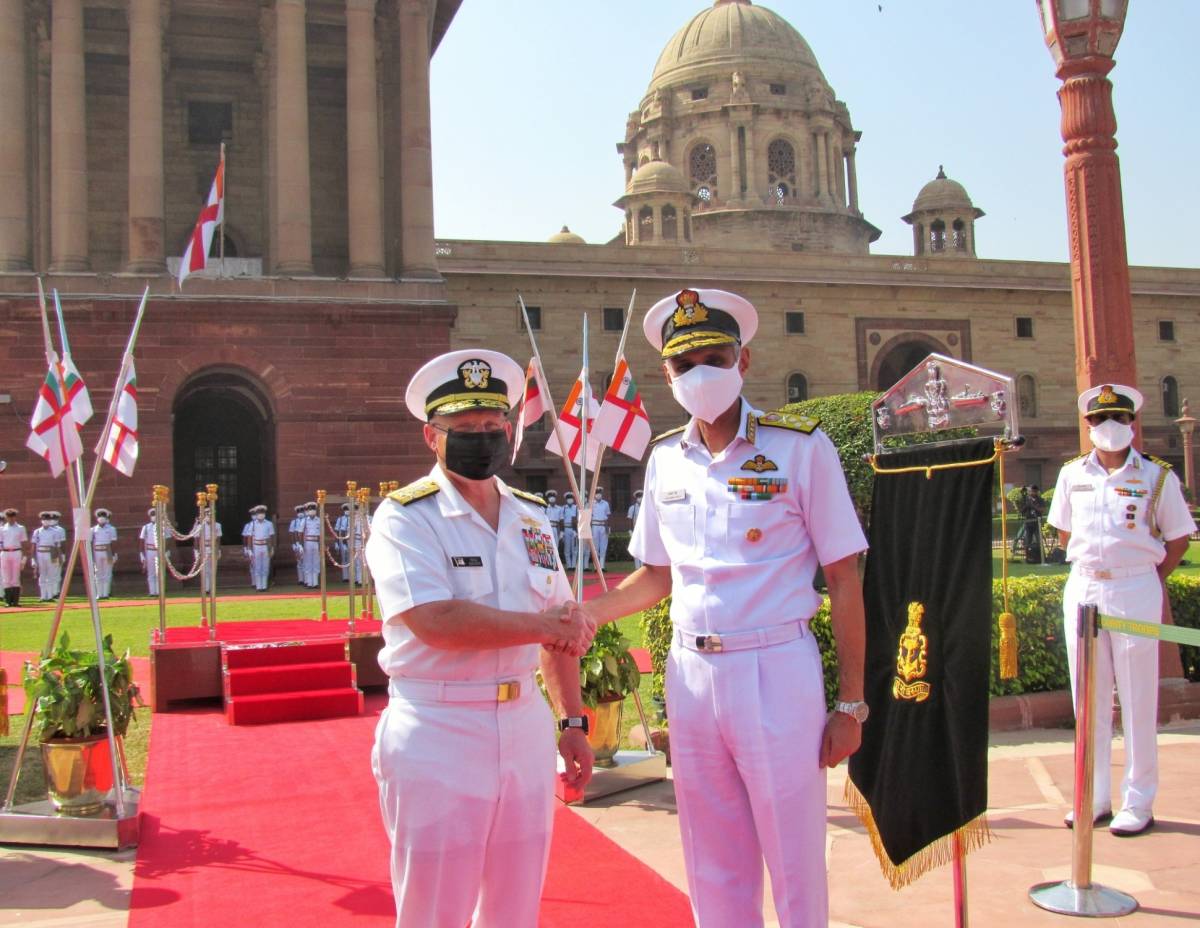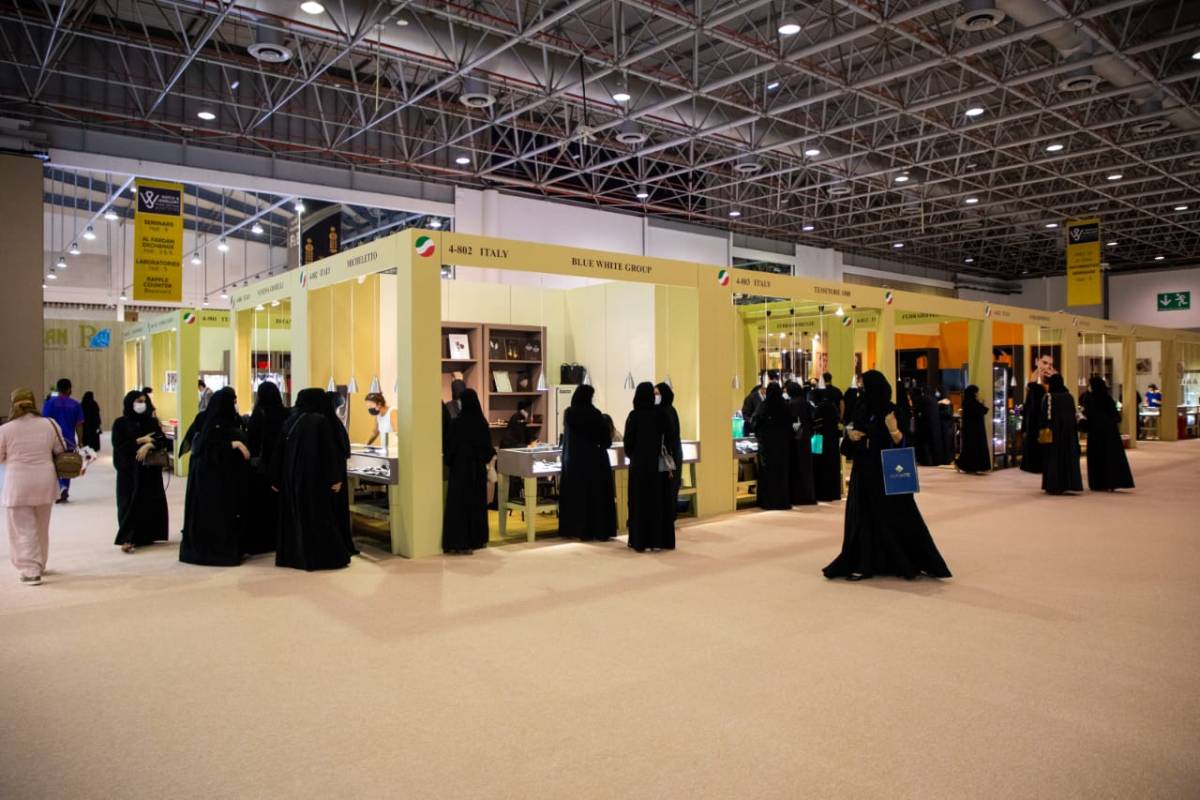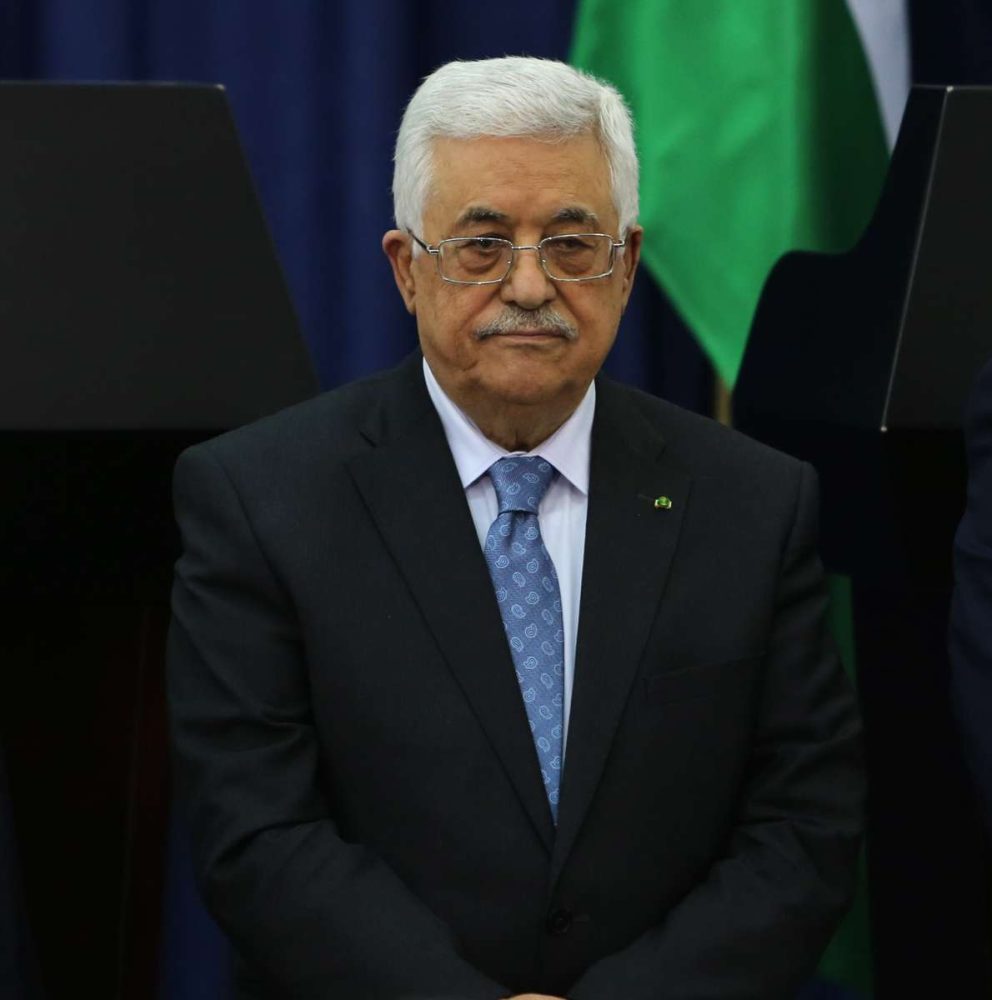Admiral Michael Gilday is scheduled to visit Indian Navy’s Western Naval Command at Mumbai and Eastern Naval Command at Visakhapatnam wherein he would interact with the respective Commander-in-Chiefs, reports Asian Lite News
Chief of Naval Operations Admiral Michael Gilday is on a five-day visit to India to strengthen military cooperation between the two countries.
Admiral Gilday, who landed in Delhi on Monday, will interact with Indian Navy Chief Admiral Karambir Singh and other senior government officials.
He is scheduled to visit Indian Navy’s Western Naval Command at Mumbai and Eastern Naval Command at Visakhapatnam wherein he would interact with the respective Commander-in-Chiefs. He is also scheduled to embark the US Navy Carrier Strike Group off the East Coast of India along with an Indian delegation.
India and the US have traditionally maintained close and friendly relations. The Defence relationship between the two countries has been one of mutual trust and confidence, which has transformed after the accord of major ‘Defence Partner Status’ to India in June 2016.
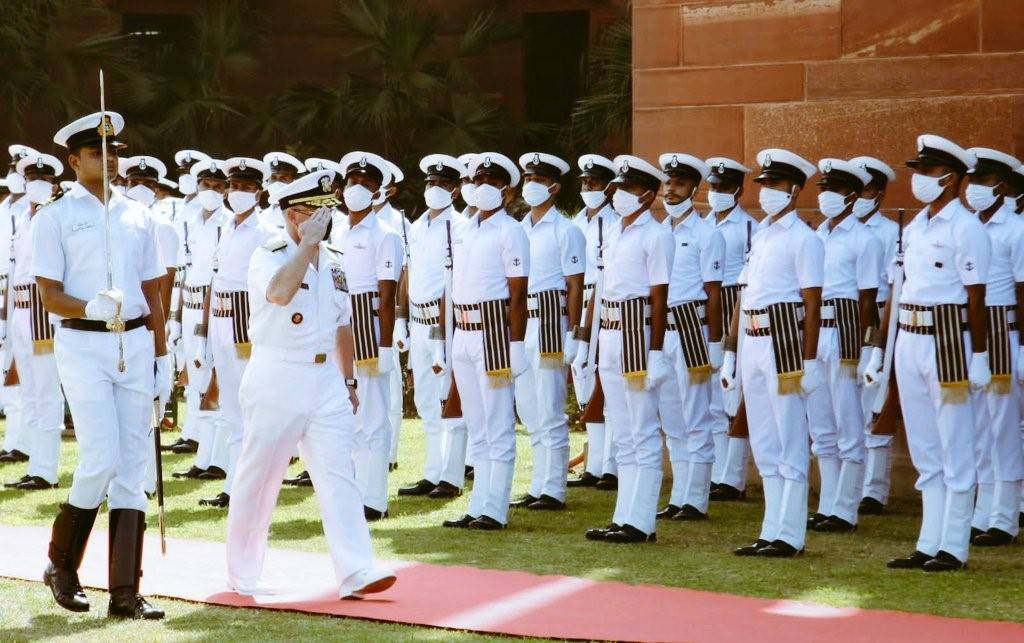
In addition, both countries have concluded certain foundational agreements, which includes the Defence Framework Agreement, signed in 2015, which lays a blueprint for collaboration between the defence establishments of both countries.
Logistics Exchange Memorandum of Agreement (LEMOA) was signed in 2016 and it is a foundational agreement facilitating reciprocal logistics support between the Armed Forces of both countries.
The Communications Compatibility and Security Agreement (COMCASA) was signed on September 6, 2018, that facilitates information-sharing between the Armed Forces of both nations and more recently, the Basic Exchange Cooperation Agreement (BECA), which enables sharing of geo-spatial information between the Ministry of Defence and National Geospatial Agency (NGA), US.
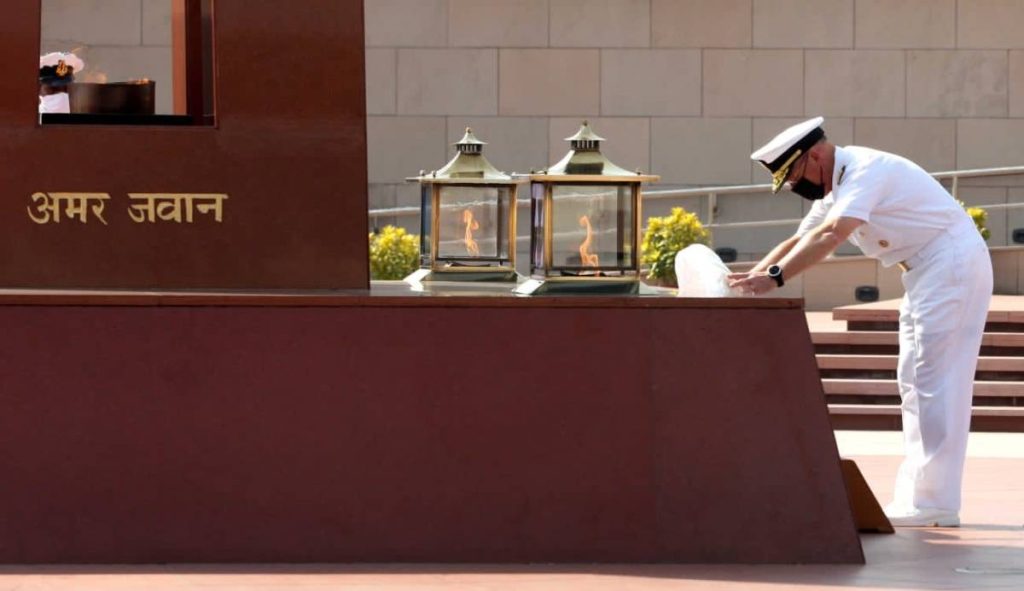
The Indian Navy closely cooperates with the US Navy on numerous issues, which include operational interactions such as the MALABAR and RIMPAC series of exercises, training exchanges, exchange of White Shipping Information and Subject Matter Experts in various fields, all of which are coordinated through the medium of Executive Steering Group (ESG) meetings conducted annually.
In addition, warships from both Navies regularly make port calls at each other’s ports. Both Navies have also been cooperating towards exploring new avenues for collaboration with the shared aim of a free, open and inclusive Indo-Pacific.
Malabar drills kick-off
Meanwhile, India, the US, Japan, and Australia on Tuesday kicked off the second phase of this year’s Malabar naval drills in the Bay of Bengal. The three-day exercise seeks to build on the synergy, coordination, and interoperability developed during the first phase held in August, the Indian Navy said.
The first phase of the exercise was conducted off the Pacific Ocean island of Guam from August 26-29. It involved destroyers, frigates, corvettes, submarines, helicopters, long-range maritime patrol aircraft, and elite special forces including the US Navy SEALs and the Indian Navy’s marine commandos.
The Indian Navy is taking part in the second phase with INS Ranvijay, INS Satpura, P-8I long-range maritime patrol aircraft, and a submarine. The US Navy is represented by the aircraft carrier USS Carl Vinson along with USS Lake Champlain and USS Stockdale. Japan is taking part with JS Kaga and JS Murasame and the Royal Australian Navy has sent HMAS Ballarat and HMAS Sirius for the drills.
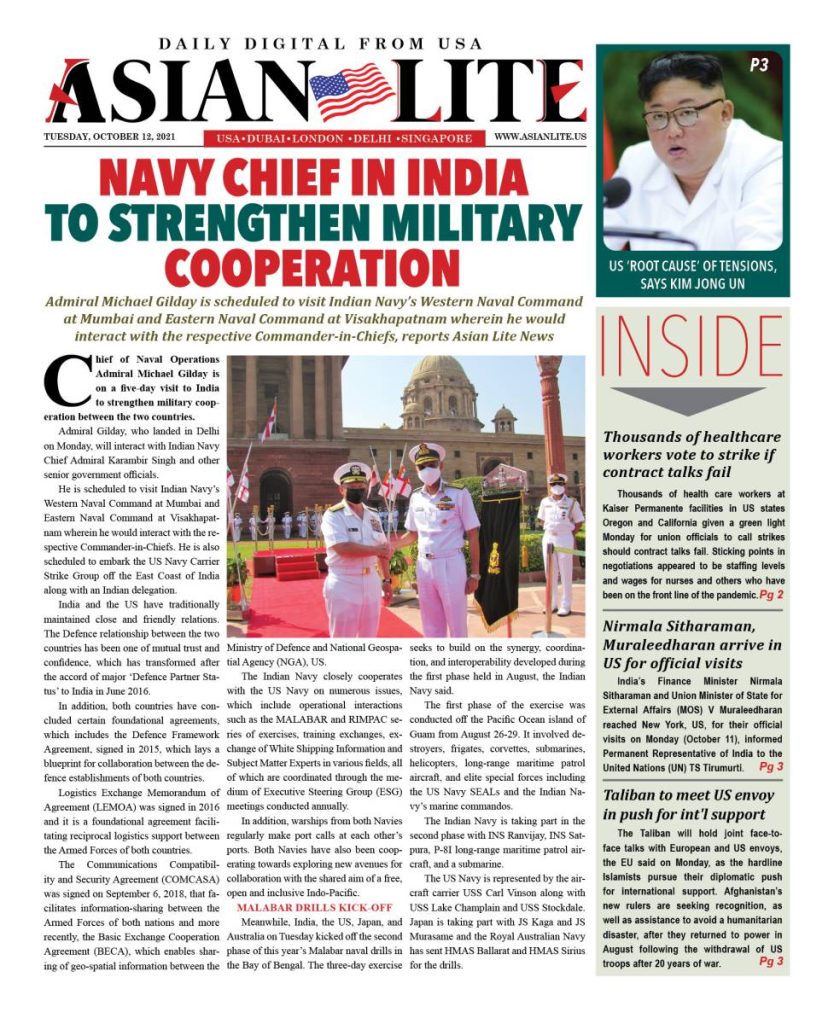
The Malabar series of exercises began as an annual bilateral naval exercise between India and the US in 1992. It has increased in scope and complexity over the years. In the 2005 edition of the drills, the aircraft carriers from the Indian and the US Navy operated together for the first time. In 2014, the Japanese Maritime Self Defence Force became a permanent participant in the drills. Australia joined the drills as a permanent participant last year.
The navies earlier carried out complex naval drills under the Malabar banner in November 2020 in the Arabian Sea and the Bay of Bengal.
Beijing has been wary of the Quadrilateral security dialogue or Quad that was revived in late 2017 by India, the US, Australia, and Japan. The four countries upgraded the forum to the ministerial level in 2019. China has been monitoring the activities of the Quad countries.
From carrying out naval drills with like-minded countries to reaching out to states in the Indian Ocean Region, the Indian Navy is focusing on checking China’s rising ambitions in the region. It has been sending out a message that Beijing’s power play in the South China Sea cannot be replicated in the Indian Ocean.


